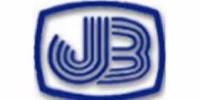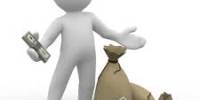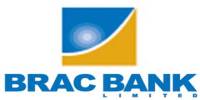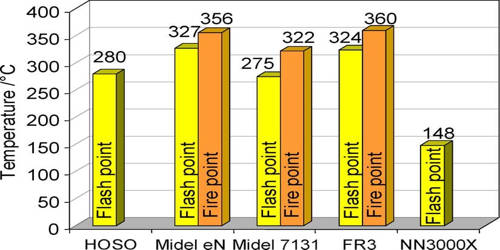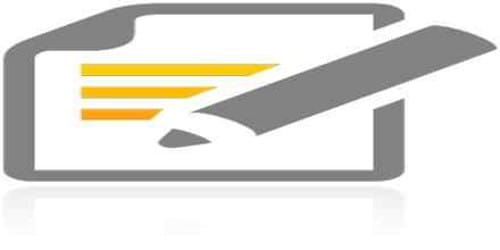Main purpose of this report is to analysis Financial Performance of BD Lamps Limited. Other objectives are find out the financial situation of BOC Bangladesh Limited and identify the problem area. The main aim of this report is to find out the financial situation and the financial trend of Bangladesh Lamps Limited. And justify the result from investor and creditor’s point of view. From this analysis we find out the financial performance and this analysis from the annual report issued by Bangladesh Lamps Limited from the year 2008 to 2009, which was the main source of information. Finally giving suggestion to overcome those problems.
The main aim of this report is to find out the financial situation and the financial trend of Bangladesh Lamps Limited. And justify the result from investor and creditor’s point of view. From this analysis we find out the financial performance and this analysis from the annual report issued by Bangladesh Lamps Limited from the year 2008 to 2009, which was the main source of information.
After the analyzing the different ratios of Bangladesh Lamps Limited we can see that there were a slight increment in Earnings Per Share and in 2009, which is good for any company. As a whole from the analysis we can say that Bangladesh Lamps Limited had a excellent year in 2009. Timely initiative by the company for producing CFL ( Energy Saving Lamps ) in the factory, gave it an edge over other competitors, to take lead in the business of energy saving lamps in the country. In this respect, the achievement in CFL was 106.54 growth in terms of value over the previous year.
BANGLADESH LAMPS LIMITED AT A GLANCE
Bangladesh Lamps Limited ( the company ) is a public limited company incorporated in 1960 in Bangladesh under the companies act 1913. The entire shareholding of Philips Holland was sold and transferred on 4 March 1993 to Transcom Limited, a company incorporated in Bangladesh, thus making the company a subsidiary of Transcom Limited .
Bangladesh Lamps Limited (BLL), part of Transcom Group is the pre-eminent and largest manufacturer of electric light bulbs in Bangladesh. With over 250,000 square feet of factory space located in the heart of Dhaka and 223 strong work force, the company manufactures Philips branded lighting products under an exclusive licensing agreement from PHILIPS Electronics N.V. Holland. With the newly installed state of the art BH-II production line (Speed: 4200 bulbs/hr), the company can produce up to 60 million bulbs per year and is looking to export products worldwide. BLL’s product range includes all types of incandescent light bulbs mainly clear, frosted Argenta, color and other special light bulbs. The company gets technical assistance from Philips Holland and strictly adheres to European quality standard (IEC).
The company produces and sells Philips, Transtec and Sainik brand electric bulbs and Transtec brand CFL in local market .
Origin of the report
This report is prepared to fulfill the partial requirement of Corporate Finance of MBA program of Royal Roads University on the ratio analysis of a company. So the business organization Bangladesh Lamps Limited is chosen and I am discussing on different ratio of this company of two years from 2008 to 2009. I have based this report from the background information and knowledge that I acquired from Bangladesh Lamps Limited and it provides a reliable and effective insight into the ratio analysis of the particular company. I did this report on financial performance because it’s a requirement of Financial Accounting course. I have tried to reflect my experience on my report in terms of financial performance of Bangladesh Lamps Limited.
Objective of the Report
- The specific objectives aimed for this report is:
- To fulfill the partial requirement of the course under the guidance of the coordinator.
- To gain experience and knowledge of analyzing the financial ratios from the real life which will help me in the practical working environment?
- To find out the financial situation of BOC Bangladesh Limited.
- Identify the problem area
- Giving suggestion to overcome those problems
- Finally comment on the result from investor and creditor’s point of view.
Research methodology
Information used to prepare this report has been collected from both the Secondary source and the primary survey. The secondary sources of information were collected from Bangladesh Lamps Limited, Dhaka Stock Exchange, Annual report of Bangladesh Lamps Limited, periodicals and materials from various newspapers, internet and articles. An open discussion method was followed to gather primary information by interviewing the company secretary of the company.
Introduction
The Balance Sheet and the Statement of Income are essential, but they are only the starting point for successful financial management. Applying Ratio Analysis to Financial Statements for the business is to analyze the success, failure, and progress of the business.
Ratio Analysis enables the business owner/manager to spot trends in a business and to compare its performance and condition with the average performance of similar businesses in the same industry. To do this comparing the ratios with the average of businesses similar to the concern business and compare the ratios for several successive years, watching especially for any unfavorable trends that may be starting. Ratio analysis may provide the all-important early warning indication that allows solving the business’s problems before the business is destroyed.
When it comes to investing, analyzing financial statement information (also known as quantitative analysis), is one of, if not the most important element in the fundamental analysis process. At the same time, the massive amount of numbers in a company’s financial statements can be bewildering and intimidating to many investors. However, through financial ratio analysis, company is able to work with these numbers in an organized fashion.
Financial ratio analysis is the calculation and comparison of ratios which are derived from the information in a company’s financial statements. The level and historical trends of these ratios can be used to make inferences about a company’s financial condition, its operations and attractiveness as an investment.
Financial ratios are calculated from one or more pieces of information from a company’s financial statements. For example, the “gross margin” is the gross profit from operations divided by the total sales or revenues of a company, expressed in percentage terms. In isolation, a financial ratio is a useless piece of information. In context, however, a financial ratio can give a financial analyst an excellent picture of a company’s situation and the trends that are developing.
A ratio gains utility by comparison to other data and standards. Taking our example, a gross profit margin for a company of 25% is meaningless by itself. If we know that this company’s competitors have profit margins of 10%, we know that it is more profitable than its industry peers which are quite favorable. If we also know that the historical trend is upwards, for example has been increasing steadily for the last few years, this would also be a favorable sign that management is implementing effective business policies and strategies.
There are three alternative means of expressions for ratio analysis. They are given below.
- Percentage
- Rate
- Proportion
Ratio analysis
Ratio analysis involves methods of calculating and interpreting financial ratios to assess the firm’s performance. Ratio analysis of a firm’s financial statements is of interest to shareholders, creditors and firm’s own management. Ratio analysis is the starting point in developing the information desired by the analyst. Ratio analysis provides only a single snapshot, the analysis being for one given point or period in time. In ratio analysis it is possible to compare the company ratio with a standard one. Ratio analysis can be classified as follows:
- Liquidity ratio
- Efficiency/Activity ratio
- Profitability ratio
- Investor’s ratio
Liquidity dimension
A firm’s ability to pay its debts can be measured partly through the use of liquidity ratios. A firm should ensure that it does not suffer from lack of liquidity and also that it is not too much highly liquid. Short term liquidity involves the relationship between current assets and current liabilities. If a firm has sufficient net working capital (the excess of current assets over current liabilities), it is deemed to have sufficient liquidity. There are some ratios that are commonly used to measure liquidity directly, they are:
- Current ratio
- Quick ratio or acid test
Current Ratio
The current ratio is a ratio of the firm’s total current assets to its total current liabilities. The current ratio is computed by dividing current assets by current Liabilities. Current asset normally includes cash, sundry debtors, inventory, marketable securities, and current liability consists of Sundry creditors, short-term loans and advance current liabilities and provision for taxes and other accrued expenses. The ratio is generally an acceptable measure of short term creditors are covered by assets that are likely to be converted into cash in a period corresponding to the maturity of the claims.
A low ratio is an indicator that a firm may not be able to pay its future bills on time, particularly if conditions change, causing a slowdown in cash collections. A high ratio may indicate an excessive amount of current assets and management’s failure to utilize the firm’s resources properly.
Current ratio = Current Assets/Current liabilities.
Calculation
All the calculation is refer to the end of this report (annexure-A)
| 2009 | 2008 | |
| Current ratio | 1.89 | 1.39 |
Analysis
BOC Bangladesh Ltd has a strong current asset base. As a result current ratio of this company is very high. We hope they will maintain this strong ratio over the period of time.
Quick ratio
The quick ratio, which is also known as acid-test ratio is a better test of financial strength than the current ratio, as it gives no consideration to inventory, which may be very slow moving. Here merchandise inventory is omitted because merchandise is normally sold on credit and then the receivable must be collected before cash is realized. A comparison of the current ratio with quick ratio would give an indication regarding inventory position. Moreover, in the very short-term the ability to meet requirements of cash can be judged only on the basis of a properly drawn cash budget and not on the basis of the quick ratio.
Quick ratio = (Current Assets – Inventory)/Current liabilities
| 2009 | 2008 | |
| Quick ratio | 1.41 | 1.15 |
Analysis
Here we see that current ratio in 2008 is 1.15 time because in that year current asset consists more than 59% of inventory. For this reason quick ratio has declined compared to current ratio. The quick ratio is increasing from 2009 because the components of current asset except inventory are increasing at higher rate than that of current liability. They must follow just in time process to increase quick ratio and as well as their actual liquidity position.
Debt Utilization Ratios
The debt utilization ratios measure the proportion of debt and how efficiently management used the debt capital. The higher the ratio the greater the amount other lender’s money being used to attempt to generate profits. There are some ratios under these criteria. They are as follows:
- Debt Ratio
- Interest coverage ratio
- Debt/equity ratio
Debt Ratio
The debt ratio measures the proportion of total assets financed by the time’s creditor. The higher the ratio, the greater the amount other peoples money being used in an attempt to generate profits. The ratio is calculated as follows:
Debt Ratio = Total Liabilities / Total Assets
| 2009 | 2008 | |
| Debt ratio | 0.53 | 0.62 |
Analysis
Analysis shows that debt ratio has continuously decreased from 2009 though the total liability has decreased in the year 2008. The ratio has decreased because total asset had increased at a higher rate than total debt. And it’s a good sign for the company. In this case creditor will allow them to sell their product to them on credit. The company is following the policy to pay the debt immediately. Thus the way they can save interest expense. And as a result their net income will be high within a short period of time.
Interest coverage ratio
A useful measure of profit that does not link return to resources is the times interest earned ratio. It shows whether the company is able to pay its annual interest cost. Failure to meet this obligation can bring legal action by the firm’s creditors, possibly resulting in bankruptcy. It is calculated by dividing the firms operating income by the interest that it must pay on its debt.
Interest coverage ratio = EBIT / Interest
| 2009 | 2008 | |
| Interest coverage ratio | 4.67 | 4.30 |
Analysis
Higher ratio of time interest earned means firm has higher ability to pay the interest from their income. In this analysis we see that there is a mass movement of this ratio over the years. There is a incline of this ratio in 2009 from 2008 indicated that the firm is paying less interest. By analyzing this ratio we must say that the company is decreasing their short-term bank loan and it is a good sign for the company not to rely on loans.
Debt/equity ratio
A measure of a company’s financial leverage calculated by dividing its total liabilities by stockholders’ equity. It indicates what proportion of equity and debt the company is using to finance its assets.
Debt/equity ratio = Long term loan / Share holder Equity
| 2009 | 2008 | |
| Debt/equity ratio | 0.12 | Nil |
Analysis
A high debt/equity ratio generally means that a company has been aggressive in financing its growth with debt. This can result in volatile earnings as a result of the additional interest expense.
If a lot of debt is used to finance increased operations (high debt to equity), the company could potentially generate more earnings than it would have without this outside financing. If this were to increase earnings by a greater amount than the debt cost (interest), then the shareholders benefit as more earnings are being spread among the same amount of shareholders. However, the cost of this debt financing may outweigh the return that the company generates on the debt through investment and business activities and become too much for the company to handle. This can lead to bankruptcy, which would leave shareholders with nothing. Here we see that BD Lamp’s debt equity ratio is increased in 2009 and stood at 0.12 compared to 2008 which Nil since they didn’t have any long term loan in 2008.
Efficiency/Activity ratio
Activity ratios reflect the firm’s efficiently in utilizing its assets. The funds of creditors and owners are invested in various kinds of assets to generate sales and profits. The better the management of assets the larger the amount of sales. These ratios are also called Turnover Ratios because they indicate the speed with which assets are being converted or turned over into sales. A proper balance between assets and sales generally reflects that the assets are managed well. There are some ratios under these criteria. They are as follows:
- Inventory turnover
- Inventory holding period
- Debtor collection period
- Creditors payment period
- Total asset turnover
- Fixed asset turnover ratio
Inventory turnover
This relationship expresses the frequency with which average level of inventory investment is turned over through operations. The higher the inventory turnover the larger the amount of profit, the smaller the amount of capital tied up in inventory and the more current the merchandise stock. Moreover, a firm with a high turnover has a great competitive advantage as it can afford to sell its merchandise at a lower price because increased sales volume may yield a larger total profit even though the margin of profit unit is slightly less.
| 2009 | 2008 | |
| Inventory turnover | 3.93 | 4.59 |
Analysis
Analysis shows that inventory turnover is less in 2009 from 2008. Here we found that the level of inventory is increasing day by day as well as the turnover is not increasing. It happens because the rate of sales is less than the rate of increase in inventory.
Debtor collection period
This ratio measures the quality of debtors. A short collection period implies prompt payment by debtors. It reduces the chances of bad debts. Similarly, a longer collection period implies too liberal and inefficient credit collection performance. It is difficult to provide a standard collection period of debtors.
| 2009 | 2008 | |
| Debtors collection period | 150 | 189 |
Analysis
Analysis shows that there is no consistency in debtors collection period. It decreases from 189 to 150 in 2009 which is not good at all.
Creditors payment period
The average payment period ratio represents the number of days by the firm to pay its creditors. A high creditors turnover ratio or a lower credit period ratio signifies that the creditors are being paid promptly. This situation enhances the credit worthiness of the company. However a very favorable ratio to this effect also shows that the business is not taking the full advantage of credit facilities allowed by the creditors.
| 2009 | 2008 | |
| Creditors payment period | 45 | 79 |
Analysis
From this analysis we get that there is a sharp decline of this ratio from 2008 to 2009. From this we can say that they have stretched payable till 2008 and they have changed their policy and tried not to pay the payable as early as possible and increasing current liability.
Fixed asset turnover
A similar measure of usage, but one, which concentrates on the productive capacity, as measured by fixed assets, indicates how successful the company is in generating sales from fixed assets. It measures how efficiently the companies are using fixed asset in generating sales.
| 2009 | 2008 | |
| Fixed asset turnover | 5.75 | 4.35 |
Analysis
From the analysis we see that the turn over is the turnover is sometime increasing and sometime it is decreasing. The ratio has increased in 2009 compare with 2008. This has happened because sales have increased and on the other hand fixed asset has decreased. By this analysis we can say that management has able to use fixed asset efficiently. Thus the way they have increased their sales by decreasing the fixed asset.
Total asset turnover
Total assets turnover indicates how well a company has used its fixed and current assets to generate sales. It is the most asset measure ratio. Such ratio is probably most useful as an indication of trends over of years. There is no particular value, which is too high or too low, but a
sudden change would prompt the observer to ask questions. In these criteria a high ratio means the company is achieving more profit.
| 2009 | 2008 | |
| Total asset turnover | .95 | .76 |
Analysis
This increase has happened because the sales have decreased at a higher rate than the rate of increase in total asset.
Profitability Dimension
There are many measures of profitability, which relate the returns of the firm to its sales, assets, or equity. As a group, these measures allow the analyst to evaluate the firm’s earnings with respect to a given level of sales, a certain level of assets, or the owners’ investment. Without profits, a firm could not attract outside capital. Moreover, present owners and creditors would become concerned about the company’s future and attempt to recover their funds. A class of financial metrics that are used to assess a business’s ability to generate earnings as compared to its expenses and other relevant costs incurred during a specific period of time. For most of these ratios, having a higher value relative to a competitor’s ratio or the same ratio from a previous period is indicative that the company is doing well.
The profitability ratios are:
- Gross profit margin
- Operating profit margin
- Net profit margin
- Return on total asset (ROA)
- Return on total equity (ROE)
- Return on capital employed (ROCE)
- Dividend per share (DPS)
Gross profit margin
The gross profit margin measures the percentage of each sales amount remaining after the firm has paid for its goods. It may be used as an indicator of the production operation and the relation between production cost and selling price. The gross profit margin is calculated as follows:
| 2009 | 2008 | |
| Gross profit margin | 18.29 | 20.10 |
Analysis
The gross profit margin has slightly decreased in 2009 compare with 2008. In 2009 sales has decreased as well as gross profit margin has also decreased The decrease in gross profit margin has happened because gross profit. To increase gross profit margin they should try to decrease their cost of goods sold. So we can say that they have failed to handle the COGS.
Operating profit margin
The operating profit margin measures the percentage of each sales amount remaining after all costs and expenses other than interest and taxes are deducted. A high operating profit margin is preferred. Operating profit margin is calculated as follows:
| 2009 | 2008 | |
| Operating profit margin | 12.68 | 13.30 |
Analysis
From the analysis we find that there is decrease of operating profit margin in 2009. The operating profit margin has decreased because of EBIT decreased in comparison to total sales in 2009 .
Net profit margin
The net profit margin measures the percentage of each sales remaining after all costs and expenses including interest and taxes deducted. The higher firm’s net profit margins the better. The net profit margin is calculated as follows:
| 2009 | 2008 | |
| Net profit margin | 9.51 | 10.28 |
Analysis
In this case also net profit margin has decreased in 2009. Earlier we have said that the increasing rate of cogs and operating cost is higher than increasing rate of sales. But we don’t mention about tax and interest. This has decreased because earnings after tax did not increase comparatively.
Return on total asset (ROA)
Calculating the return on total assets is another variation on measuring how well the assets of the business are used to generate profit Return on total assets also called return on investment. It measures the overall effectiveness of management to generate profit with its assets. It could be measures as follows:
| 2009 | 2008 | |
| ROA | 9.01 | 7.77 |
Analysis
From 5 years data we see that net income has continuously increased till 2009. As a shareholders point of view it is good sign for the company.
Return on total equity (ROE)
The return on shareholder’s equity is a measure of company performance from the shareholder’s perspective. It measures the return on the owners’ investment in the firm. Return on equity is calculated as follows:
| 2009 | 2008 | |
| ROE | 19.13 | 20.30 |
Analysis
ROE has decreased due to earnings after tax has not increased comparatively. It does not show better return to the shareholders.
Return on capital employed
A ratio that indicates the efficiency and profitability of a company’s capital investments. ROCE should always be higher than the rate at which the company borrows, otherwise any increase in borrowing will reduce shareholders’ earnings.
| 2009 | 2008 | |
| ROCE | 22.73 | 25.80 |
Analysis
The ROCE has decreased by 22.73 percent compared to 2008 which was 25.80. It does not show good return on capital employed by BD Lamps Ltd.
Dividend per share
The the sum of declared dividends for every ordinary share issued. Dividend per share (DPS) is the total dividends paid out over an entire year (including interim dividends but not including special dividends) divided by the number of outstanding ordinary shares issued.
| 2009 | 2008 | |
| DPS | 46.58 | 29.06 |
Analysis
The DPS of the company does not show constant at 2009 and 2008 because of dividend declared and number of common shares outstanding did not remain same during the years.
Ownership ratios
Ownership ratios assist the stockholder in analyzing present and future investment in a company. Stockholders are interested in the way certain variables affect the value of their holdings. The ratios compare the value of the investment with factors such as debt, dividends, earnings, and the market price of the stock. By understanding the profitability and liquidity ratios, the owner gains insights into the soundness of the firm’s business activities. By investigating ownership ratios, the stockholder is able to analyze the likely future market value of the stock. There are some ratios under this norm. They are as follows:
- Earnings per Share (EPS)
- Dividend ratio
Earnings per Share (EPS)
Stockholders are concerned about the earnings that will eventually be available to pay them dividends or that are used to expand their interest in the firm because the firm retains the earnings. These earnings may be expressed on a per share basis. Earnings per share are calculated by dividing net income by the number of shares outstanding. Shares authorized but not issued, or authorized, issued and repurchased (treasury stock), are omitted from the calculation.
| 2009 | 2008 | |
| EPS | 81.17 | 76.75 |
Analysis
Due to the increase in net income in the year 2009 EPS has increased. BD Lamps Ltd shows a continuous improvement in EPS which shows a good growth of the company.
Dividend payout ratios
The common stockholder is very concerned about the position taken by firm with respect to the payment of cash dividends. If the firm is paying insufficient dividends, the stock is not attractive to investors desiring some current income their investment. If it pays excessive dividends, it may not be retaining adequate funds to finance future growth. To pay consistent and adequate dividends, the firm must be liquid and profitable. Without liquidity, the firm cannot locate the cash needed to pay the dividends. Without profits, the firm does not have sufficient retained earnings to in dividend declarations.
| 2009 | 2008 | |
| Dividend payout | 57% | 38% |
Analysis
The company is following to pay more dividends to attract investor to invest in their company. But this strategy is not good because for the company for all time. In 2009 their dividend payout ratio increased because total dividend increased and PAT did not increase comparatively.
An over view discussion from an investor’s point of view
Investors who buy shares in a company want to be able to compare the benefit from the investment with the amount they have paid, or intend to pay, for their shares. There are two measures of benefit to the investors. One is the profit of the period. The other is the dividend which is an amount actually paid to the shareholders. Profit indicates wealth created by the business. That wealth may accumulate in the business or else part of it may be paid out in the form of dividend. There are some ratios, which may consider by the investor. They are as follows:
- Net profit margin
- Return on asset
- Return on equity
- Earnings per share
- Dividend per share
- Asset per share
All of these ratios are related to profitability dimension. An investor wants to invest his money on thos e organizations, which are profitable for him. So he might give more emphasize on profitability dimension rather than other ratios. So that above ratio might give him a clear view of the company whether it is profitable or not. By the following ratio we will justify BD Lamps Ltd from an investor’s point of view. All the ratio’s are shown in the annexure at the end of this report.
Conclusion
In this report we have discussed about different ratio of BOC Bangladesh Ltd. Our main job was to determine the financial position of this company whether it is running good or not. As we are very new in finance course, we face some problem while doing this assignment. But we have tried hard to complete this assignment successfully. From the over view of the data we find that the company face some problem in different sector in 2009. Otherwise everything is tolerable but they must try hard to increase their net income again to create a good impact on investor.

